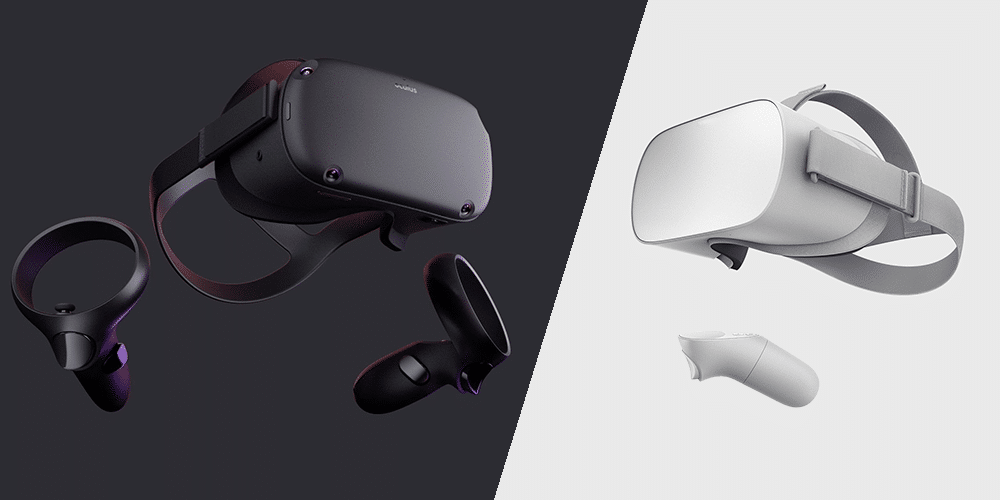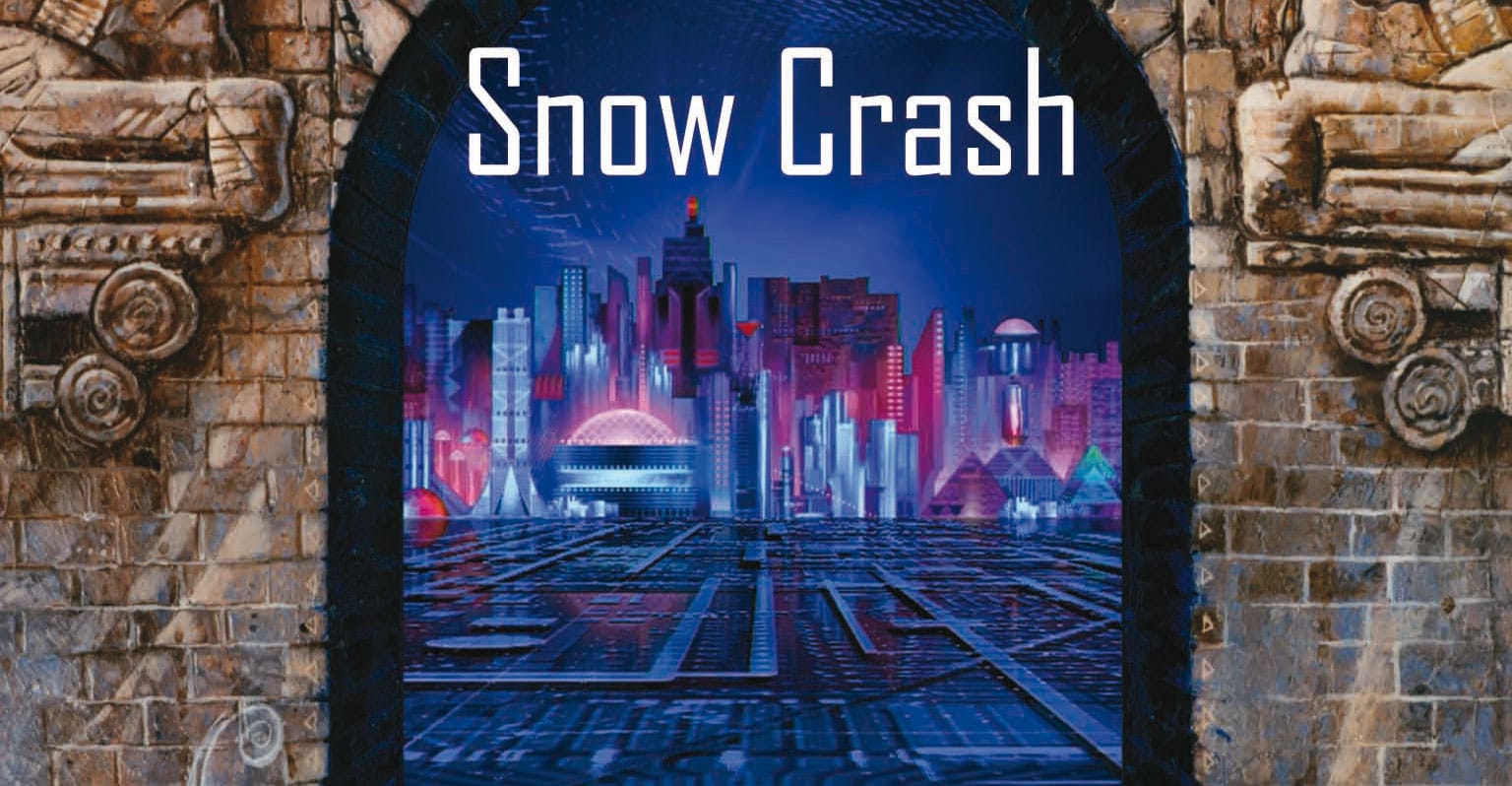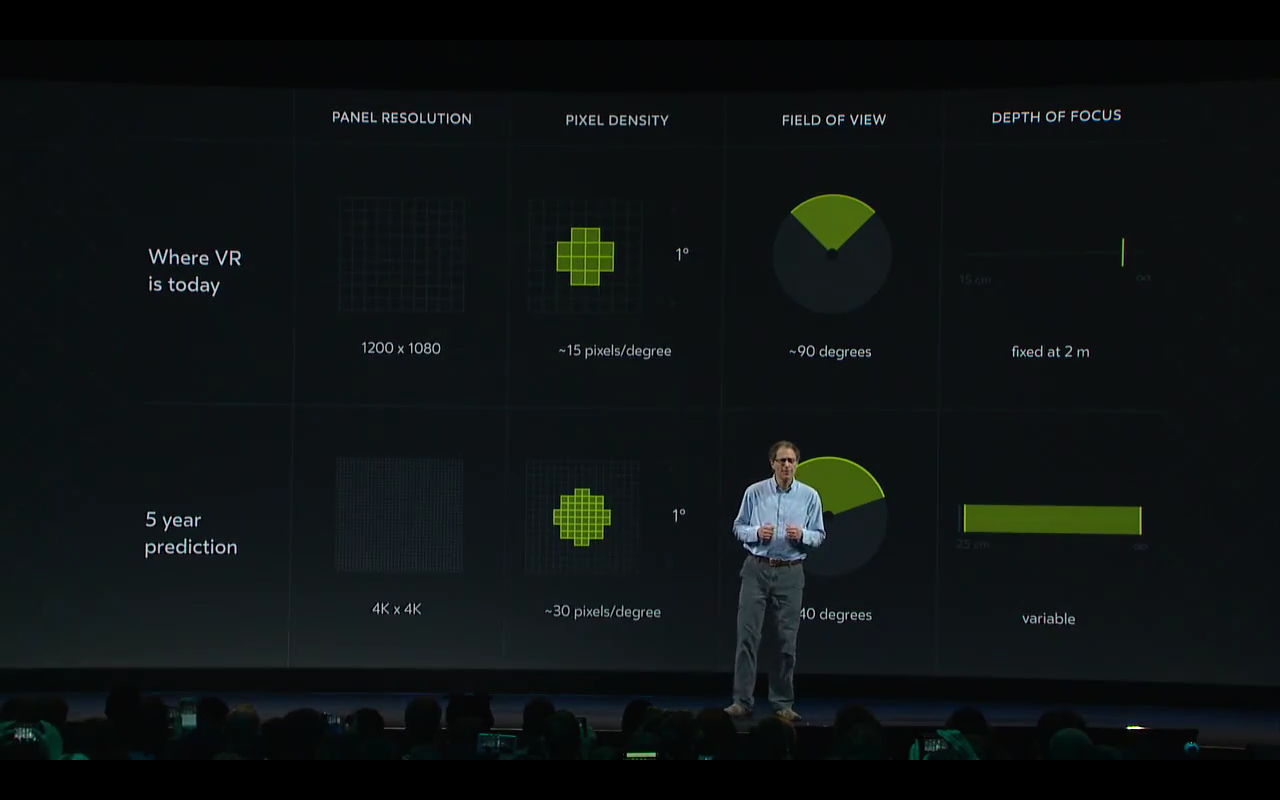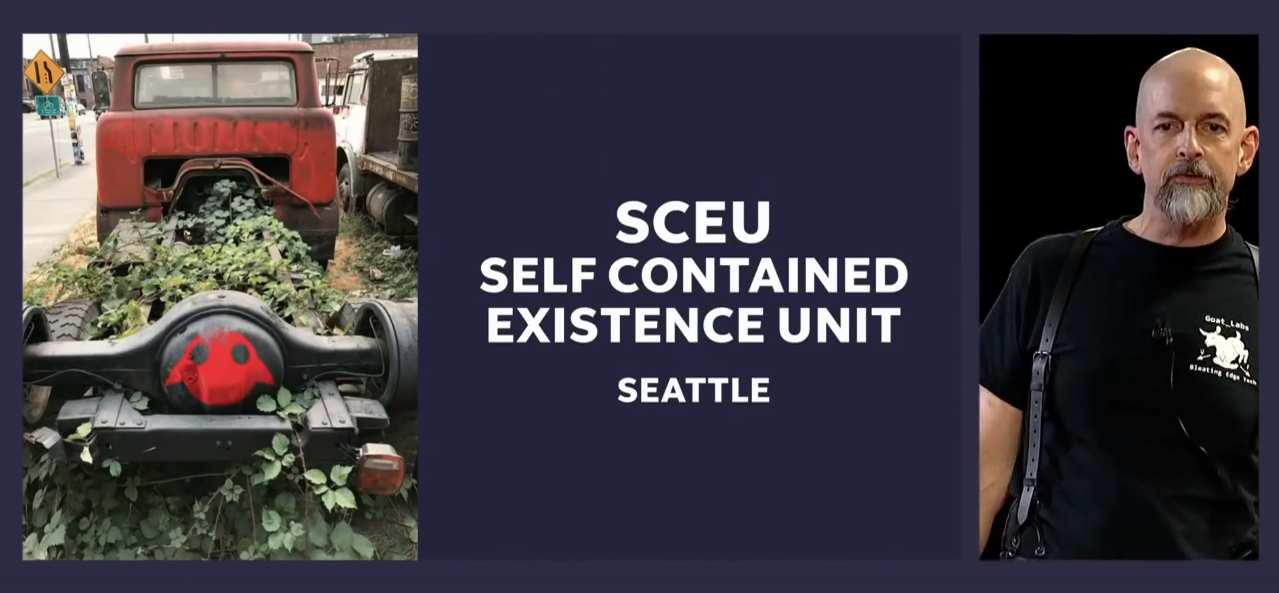Snow Crash is a 1992 science fiction novel written by Neal Stephenson. The book has a deeply complex plot touching on ancient languages, religion, simulation theory, philosophy, computer science, and more. It was nominated for the Arthur C. Clarke Award.
But much of the novel doesn’t take place in the real world. Despite being released before even Wolfenstein 3D and three years before the Virtual Boy, much of Snow Crash takes place in a massively multiplayer VR world.
It Predicted Oculus Go & Quest’s Specs
Here’s how Stephenson described the protagonist’s VR headset:
By drawing a slightly different image in front of each eye, the image can be made three-dimensional. Ḅy changing the image seventy-two times a second, it can be made to move. Ḇy drawing the moving three-dimensional image at a resolution of 2K pixels on a side, it can be as sharp as the eye can perceive, and by pumping stereo digital sound through the little earphones, the moving 3-D pictures can have a perfectly realistic soundtrack.

Oculus Go and Oculus Quest are the only announced headsets with a refresh rate of 72Hz. Some others have 75Hz, but Facebook chose 72. In fact, the Oculus DK2 back in 2014 even had a 72Hz mode. This can be explained in that 72 is is a multiple of 24- the frame rate of film. But just how many people are really watching films on their VR headset? And why has no other VR company chosen this refresh rate? Perhaps Snow Crash inspired the decision.
When the book was written almost 30 years ago, VR headsets were rare. The few which existed cost in excess of $50,000 and had resolutions of a few hundred pixels “on a side”. The book’s description of a resolution of “2K pixels on a side” is eerily similar to the 2560×1440 resolution of Go.
It Coined The Term ‘Metaverse’

The term Metaverse is popular in VR today. It’s used to describe the concept of a massively multiplayer virtual world focused on social interaction rather than just gaming. Essentially, the metaverse is the spatial version of the internet.
But where did this term come from? Snow Crash. Here’s how Stephenson described what Hiro is doing in his VR headset:
So Hiro’s not actually here at all. He’s in a computer-generated universe that his computer is drawing onto his goggles and pumping into his earphones. In the lingo, this imaginary place is known as the Metaverse. Hiro spends a lot of time in the Metaverse.
‘Meta’ means after or beyond, and ‘verse’ is taken from the universe. Thus a ‘metaverse’ is a new universe beyond & after the real one.
And Popularized The Term ‘Avatar’
![]()
We all know what an avatar is today. A digital character representing yourself in a virtual world. In some cases an avatar can be a representation of yourself, and in others intentionally not. While Stephenson didn’t invent the term, he did popularize it:
He is not seeing real people, of course. This is all a part of the moving illustration drawn by his computer according to specifications coming down the fiber-optic cable. The people are pieces of software called avatars. They are the audiovisual bodies that people use to communicate with each other in the Metaverse. Hiro’s avatar is now on the Street, too, and if the couples coming off the monorail look over in his direction, they can see him, just as he’s seeing them.
Snow Crash’s description of avatars still applies to metaverses like VRChat today.
It Inspired Michael Abrash
Michael Abrash is Chief Scientist at Facebook Reality Labs. That’s the division of Facebook which researches future VR & AR tech. He also reportedly co-leads Facebook’s new AR glasses team.

In 1994 Abrash was working at Microsoft. He had helped develop the core graphics architecture of Windows. After reading Snow Crash, he quit Microsoft and joined John Carmack at Id. Together they developed Quake- one of the first widely popular online multiplayer FPS games. He returned to Microsoft after to work on the graphics architecture for the Xbox, amongst other things. He then worked at companies like Intel until 2011 when he joined Valve.
After joining the company Abrash wrote a blog post explaining his history. The first sentence was “It all started with Snow Crash.”
At Valve Abrash researched VR and AR- realizing that the era of VR as described in Snow Crash all those years ago was finally on the horizon. Thanks to the depth and quality of his research, Abrash was hired by Oculus in 2014 as Chief Scientist. After more than 20 years, he is now working with John Carmack again.
Every year at the annual Oculus Connect conference Abrash delivers a speech about the future of VR based on the company’s research. Next time, listen carefully for just how often he refers to the “metaverse”- or even Snow Crash itself. Abrash has on many occasions explained how without this book, he likely wouldn’t be working in VR or games at all.
The Author Is Now At Magic Leap
So what’s Neal Stephenson doing today? He now works at secretive AR startup Magic Leap. His official title is ‘Chief Futurist’.

Stephenson leads Magic Leap’s Seattle office. He manages a team called the Self-Contained Existence Unit (SCEU). SCEU focuses on content R&D, pushing the boundaries on what can be developed in AR, figuring out best practices, and providing examples to developers.
We’ll certainly keep a close eye on Magic Leap to see what this futurist imagines next.

























